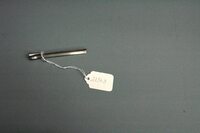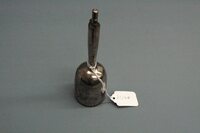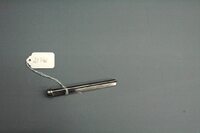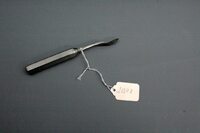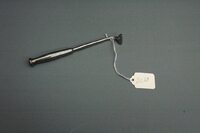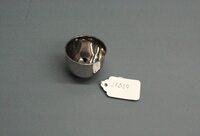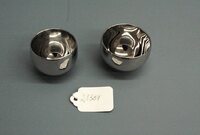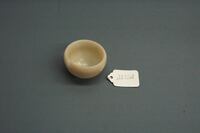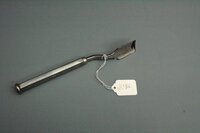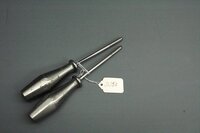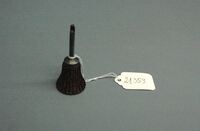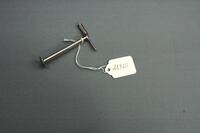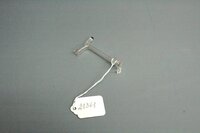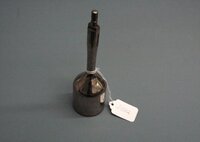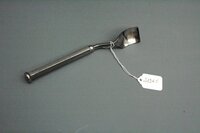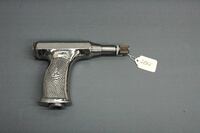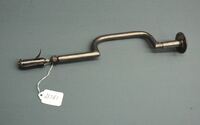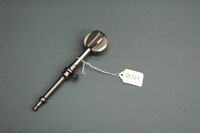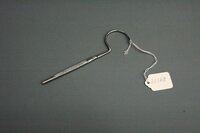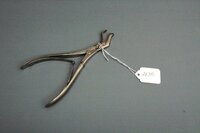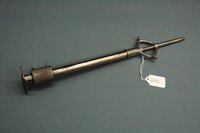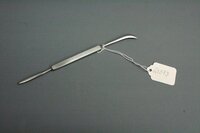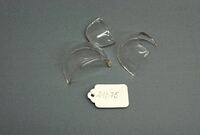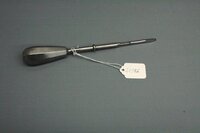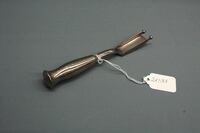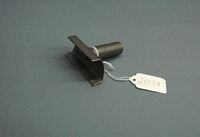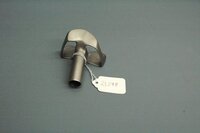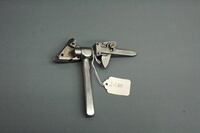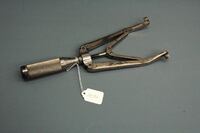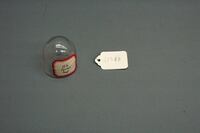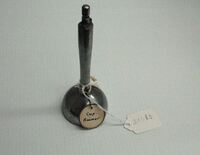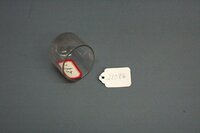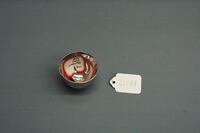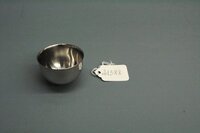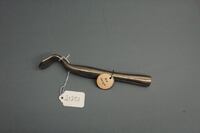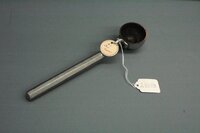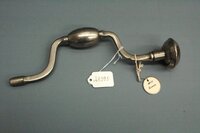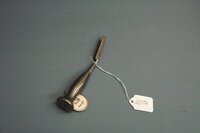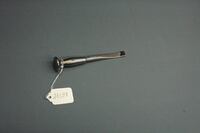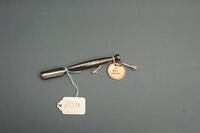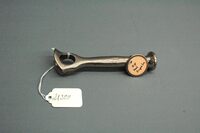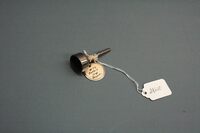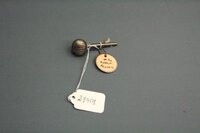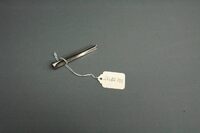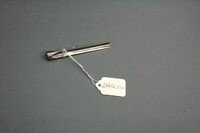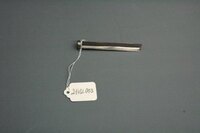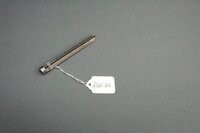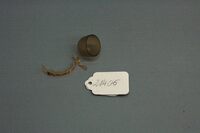Marius N. Smith-Petersen Collection, 1922-1953. WAM 21343-21402, 21406.
Dublin Core
Title
Marius N. Smith-Petersen Collection, 1922-1953. WAM 21343-21402, 21406.
Subject
Arthroplasty, Replacement, Hip
Hip Dislocation, Congenital
Orthopedic Procedures
Smith-Petersen, Marius Nygaard, 1886-1953
Description
Marius Nygaard Smith-Peterson was born in Norway on November 14, 1886. After coming to the United States with his mother in 1903, he went on to graduate from West Side High School in Milwaukee, WI in 1906. He then attended the University of Chicago before transferring to the University of Wisconsin, where he received his Bachelor of Science in 1910. He received a medical degree from Harvard Medical School in 1914. While completing his surgical internship, he worked under Dr. Harvey Cushing at the Peter Bent Brigham Hospital in Boston. After gaining experience in medicine by assisting Dr. E. G. Brackett at the Massachusetts General Hospital, he went into practice for himself in 1922. Over the course of his surgical career, he focused much of his effort on the field of arthroplasty, and his work on the use of a mold in hip reconstruction gained him much notoriety among orthopedic surgeons. Alongside his surgical practice, he held various teaching positions at Harvard Medical School, beginning as an assistant instructor of orthopedic surgery and ending with a clinical professorship, before retiring from teaching in 1946. Despite his retirement from teaching, Smith-Peterson continued his medical practice until his death. He died on June 16, 1953, in Boston.
This collection contains a number of surgical tools created or used by Smith-Petersen in his orthopedic practice from 1925-1953.
This collection contains a number of surgical tools created or used by Smith-Petersen in his orthopedic practice from 1925-1953.
Rights
The Harvard Medical Library does not hold copyright on all the materials in the collection. For use information, contact the Warren Anatomical Museum Curator at chm@hms.harvard.edu
Access Rights
Accessing collections in the Warren Anatomical Museum and the Warren Anatomical Museum archive requires advanced notice. Please submit a request to Public Services at chm@hms.harvard.edu to access the displayed item
Provenance
Separated from Harvard Medical Library collection H MS c609
Found in Harvard Medical Library artifact collections and removed by Warren Anatomical Museum curator 04/03/2014
Collection Items
Smith-Petersen nail
Small flanged nail used in orthopedic operations. The flanged nail was devised to bring about absolute fixation in all directions and displace a minimum amount of bone
Reamer with toothed edge
Metal instrument with bell-shaped end and grooves inside. There is a stem with a small narrow end on one side of the instrument.
Smith-Petersen nail
Small flanged nail used in orthopedic operations. The flanged nail was devised to bring about absolute fixation in all directions and displace a minimum amount of bone.
Smith-Petersen nail - Temann Stainless
Small flanged stainless steel nail used in orthopedic operations. The flanged nail was devised to bring about absolute fixation in all directions and displace a minimum amount of bone.
Smith-Petersen gouge (?)
Metal gouge that is curved in three sides at one of the ends and has a handle on the other end. Bone chisels are used for carving small pieces out of the bones to reach the inner soft part. They are also used to score, cut, scrape, clean and sculpt…
Cobb orthopedic elevator
Metal instrument with a spoon type end and six-angled handle. It has the stamped inscription "SP" on it. The spoon is sharp and was used for carving and blunt dissection.
Two Smith-Petersen vitallium molds for arthroplasty
Two semi-spherical vitallium molds used for hip arthroplasty
Smith-Petersen viscaloid mould
Reddish-brown semi-spherical viscaloid mould used for hip arthroplasty
Large hip gouge with convex tip
Metal swan neck curved gouge with an octagonal handle and a sharp convex spatula shape tip. The large gouge was first used in 1944.
Large hip gouge
Metal instrument with hexagonal handle and a sharp convex rectangular tip. The large gouge was first used in 1944 and has the same curves as the smaller hip gouges. It was particularly useful in excising the posterior margin of the acetabulum.
Reamer
Large metal bell-shaped reamer with a ridged middle. Used for initial shaping of the femoral head and acetabulum.
Reamer toothed edge
Metal instrument with bell-shaped end and grooves inside. There is a stem with a small narrow end on one side of the instrument.
Universal trocar with 4 tips
Metal trocar instrument with a removable base that can be switched out with 4 tips of varying sizes (6.0 mm, 4.5 mm, 3.3 mm, and 1.9 mm)
Pin and wire cutter cannulated orthopedic
Large metal cutter with one curved and one straight handle. The handles have grooves.
Bone compass
Metal measuring device with an adjustable screw at the top and in the middle. Maximum opening of 6.5 cm.
Smith-Petersen unknown measuring instrument
Cylindrical metal tool with a circular piece and thin pointed tip at one end and a thick band at the other. Probably used for measuring.
Instrument with two ends
Metal tool with a handle in the middle with one curved end and one straight end
Large Smith-Petersen nail (?)
Large metal nail with a spherical tip. The Smith-Petersen nail was devised to bring about absolute fixation in all directions and displace a minimum amount of bone.
Smith-Petersen glass mold
Three broken pieces of a semi-spherical glass mold used for hip arthroplasty
Smith-Petersen instrument (?)
Chrome steel tool with a thick ridged handle, a cylindrical middle segment, and a pointed tip
Spatula type Smith-Petersen instrument
Small instrument with two round plugs on the spatula and convex edges. Instrument has a curved handle.
Instrument handle
Metal piece with a double-sided head, both of which have indented and triangular fixation elements
Glass mold
Semi-spherical glass mold. There is a rectangular red and white label with "12b Pyrex cup" handwritten in black ink.
Ball reamer
Metal reamer with a ridged circular base. There is a round metal label with "Ball Reamer" handwritten in black ink.
Female reamer
Metal semi-spherical reamer with a toothed edge. There is a round metal label with "Cup Reamer" handwritten in black ink.
Glass mold
Semi-spherical glass mold. There is a rectangular red and white label with "12a Glass Cup" handwritten in black ink.
Smith-Petersen stainless mold - "stainless shape cup"
Semi-spherical stainless steel mold. There is a red and white label with "12d Stainless Shape Cup" handwritten in black ink.
Smith-Petersen viscaloid mold
Semi-spherical viscaloid mold. There is a rectangular red and white label with "12c Red Viscaloid Cup" handwritten in black ink.
Smith-Petersen vitallium mold
Semi-spherical vitallium mold. There is a rectangular red and white label with "12e Vitallium Cup" handwritten in black ink.
Arthroplasty gouge
Metal hip gouge with convex rectangular tip. There is a round metal label with "Arthroplasty Gouge" handwritten in black ink.
Hip gouge
Metal hip gouge with a hooked end and flat tip. There is a round metal label with "Hip Gouge" handwritten in black ink.
Cup reamer
Semi-spherical horizontal metal reamer with a toothed edge. There is a round metal label with "#1 Cup Reamer" handwritten in black ink.
Orthopedic mallet
Metal mallet with thick handle. There is a round metal label with "#9 Mallet" handwritten in black ink.
Surgical handle for drill
Metal handle for surgical hand drill. There is a round metal label with "#10 Brace" handwritten in black ink.
Trough gouge
Metal gouge with thin rectangular trough and thick handle. There is a round metal label with "Trough Gouge" handwritten in black ink.
Nail starter
Small metal tool with a concave rectangular end. There is a round metal label with "15 Nail Starter" handwritten in black ink.
Hip nail impactor
Metal instrument with two holes on the tip. It has a round metal label marked with "Hip Nail Impactor."
Rabbit cup reamer
Small size cup type instrument with a narrow long stem. There is a round metal label with "#11b Rabbit Cup Reamer" handwritten in black ink.
Rabbit reamer
Small round metal reamer with a narrow long stem. There is a round metal label with "#11a Rabbit Reamer" handwritten in black ink.
Smith-Petersen nail
Small flanged nail used in orthopedic operations. The flanged nail was devised to bring about absolute fixation in all directions and displace a minimum amount of bone.
Smith-Petersen nail
Small flanged nail used in orthopedic operations. The flanged nail was devised to bring about absolute fixation in all directions and displace a minimum amount of bone.
Smith-Petersen nail
Small flanged nail used in orthopedic operations. The flanged nail was devised to bring about absolute fixation in all directions and displace a minimum amount of bone.
Smith-Petersen nail
Small flanged nail used in orthopedic operations. The flanged nail was devised to bring about absolute fixation in all directions and displace a minimum amount of bone
Smith-Petersen viscaloid cup
Semi-spherical viscaloid cup. There is a tag with the item with "Viscaloid Cup" handwritten in black ink.
Collection Tree
- Warren Anatomical Museum
- Marius N. Smith-Petersen Collection, 1922-1953. WAM 21343-21402, 21406.

